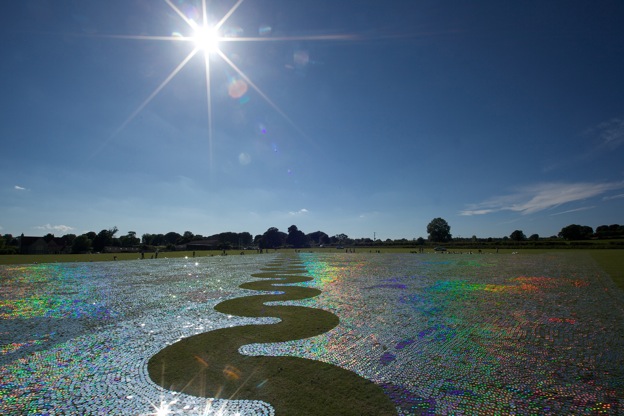
Photo by Mark Pickthall, courtesy of Bruce Munro via Claude Communications.
Often it takes only a simple idea, coupled with enthusiasm, to create something extraordinary. British light artist Bruce Munro uses discarded or recycled materials for his astonishing, large-scale installations, which are all self-funded. For his open-air work, CDSea, he asked the general public to donate old CDs to him. Soon, he was flooded with donations — 586,238 CDs, to be precise.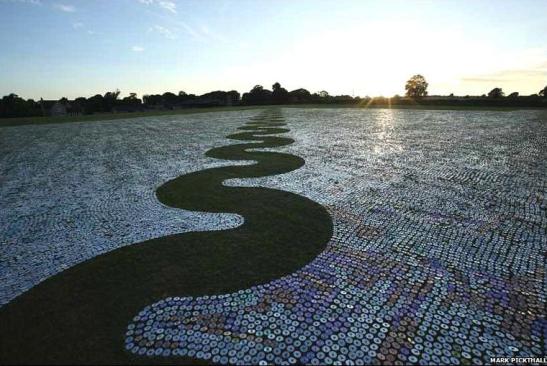
Photo by Mark Pickthall, courtesy of Bruce Munro via Claude Communications.
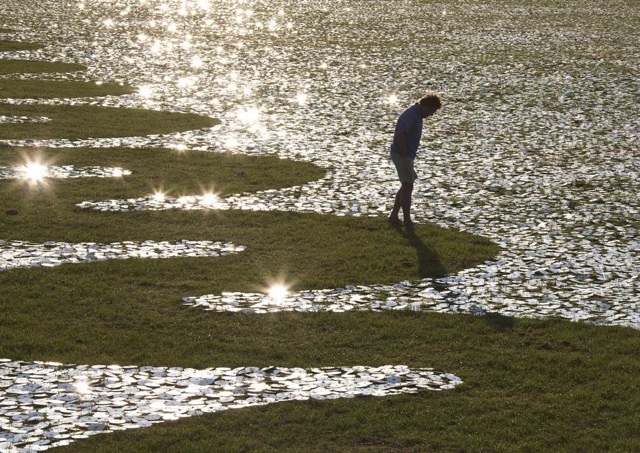
Photo by Mark Pickthall, courtesy of Bruce Munro via Claude Communications.
The artist and 140 of his friends and colleagues set the weekend of the 19th and 20th June 2010 aside to lay the CDs out on a 10-acre field in the village of Long Knoll, Wiltshire, in the English countryside. Arranged alongside one another in gentle waves, hundreds of thousands of CDs formed a glittering, silver “sea” reflecting the light of the sun and the moon. In the middle is a meandering, river-like footpath set according to Munro’s design, which divides the 1,290-square-foot sea.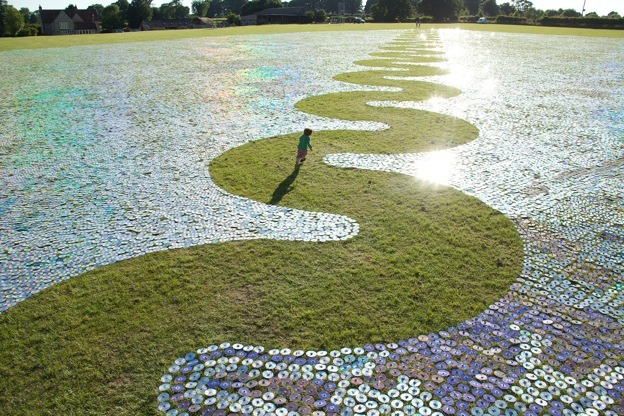
Photo by Mark Pickthall, courtesy of Bruce Munro via Claude Communications.
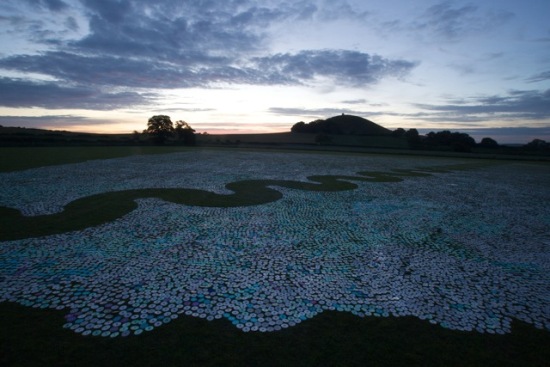 Photo by Mark Pickthall, courtesy of Bruce Munro via Claude Communications
Photo by Mark Pickthall, courtesy of Bruce Munro via Claude Communications

Photo by Mark Pickthall, courtesy of Bruce Munro via Claude Communications.
Thus, nature — the great recycler — reclaimed the open-air gallery, and the installation was eventually dismantled somewhat before its time. Nevertheless, it remained in the minds of the visitors who saw the splendid artwork and the volunteers who created it, and is preserved in these wonderful photos.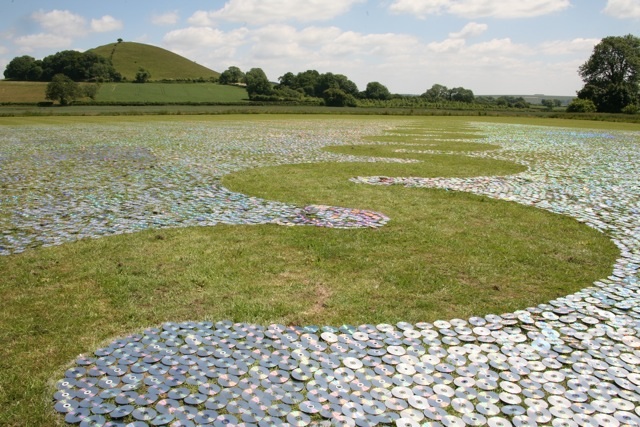
Photo by Mark Pickthall, courtesy of Bruce Munro via Claude Communications.
The idea for CDSea was born in Bruce Munro’s mind one afternoon in one of the harbor parks of Sydney, where he was struck by the reflection of the sun on the water. Munro recalls: “The light was still strong, like a blanket of shimmering silver light. I had this childish notion that by putting my hand in the sea I was somehow connected to my home in Salcombe [U.K.], where my father lived. I came away from the beach in a very positive frame of mind, at one with the world.”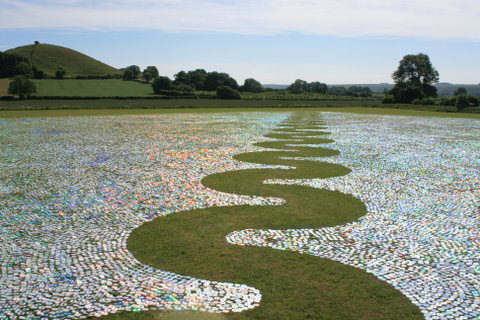
Photo by Serena Munro, courtesy of Bruce Munro via Claude Communications.
CDSea is Munro’s effort to share this important moment in his life with the world. It is also an attempt to recreate the play of light, so abundantly found in sunny Australia, with parts of the world that are not so lucky. Munro admits: “I was very nervous about it. You never know how something will work out, but now I could not be happier.” This video shows the amazing installation from beginning to end: Light is a central theme in Munro’s work: He’s also worked with “light flowers” — acrylic stems with glass spheres — and illuminated water bottles. As an artist and light designer, he takes care of interior and exterior lighting and also designs lights and illuminated sculptures. Yet, gleaming in the sunlight, CDSea is surely his magnum opus. Sources: 1, 2, 3